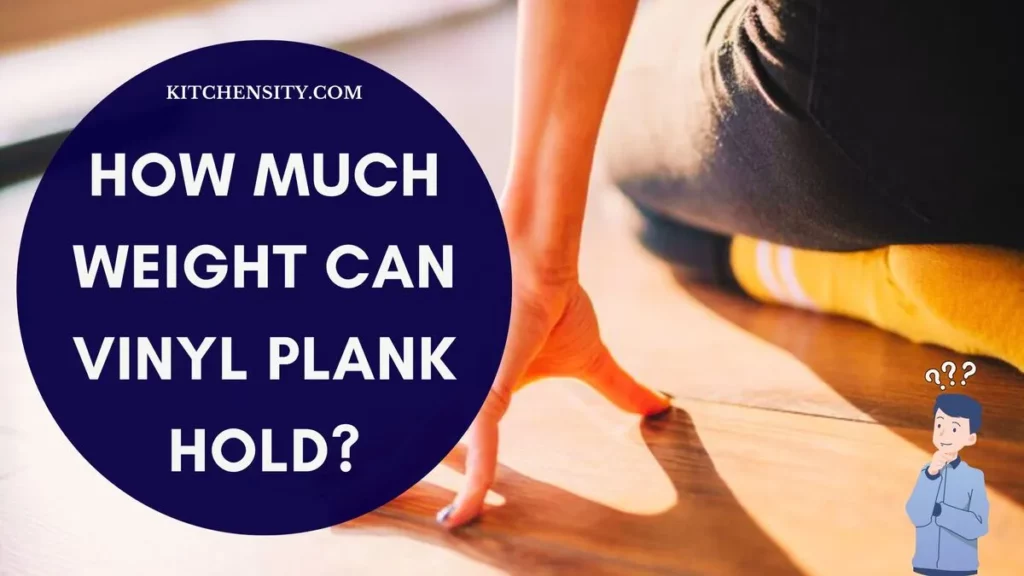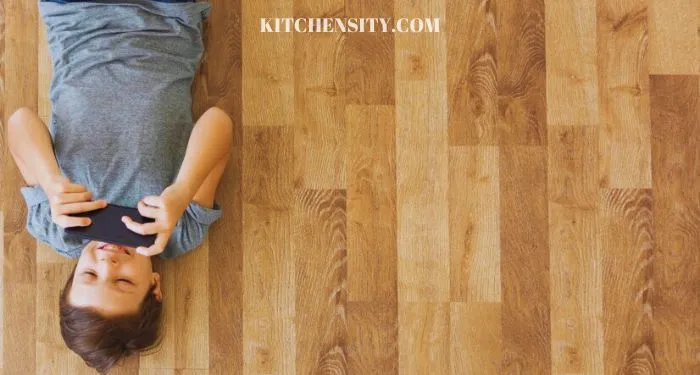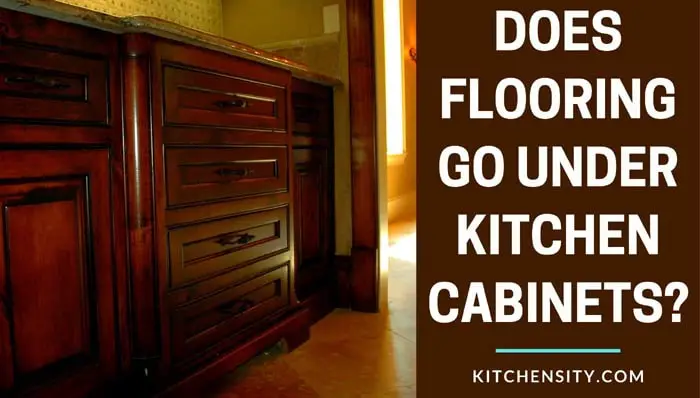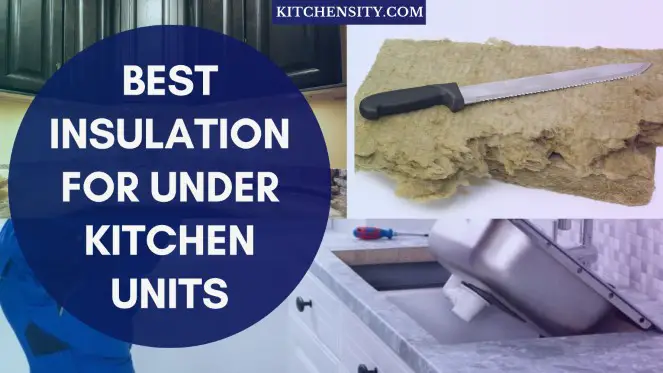Curious about the robustness of your vinyl plank flooring? Wondering, “How much weight can vinyl plank hold?“
Well, you’re not alone! Your flooring needs to stand up to the daily hustle, especially when it comes to supporting the weight of furniture, appliances, and maybe even a few dance moves at that spontaneous family gathering.
In this article, we’ll unravel the secrets behind the weight-bearing prowess of vinyl plank. From understanding thickness to mastering proper installation techniques, we’ll delve into the factors that make vinyl plank a reliable and resilient choice for your home.
So, buckle up as we lift the veil on the strength of your flooring and discover if it’s ready to handle whatever life throws its way!
Table of Contents
- 1 How Much Weight Can Vinyl Plank Hold?
- 2 The Strength Of Vinyl Plank Flooring
- 3 Installation Impact Of Vinyl Plank Flooring
- 4 How Much Weight Can Luxury Vinyl Plank Hold?
- 5 Can You Put Heavy Appliances On Vinyl Plank Flooring?
- 6 What Can Damage Vinyl Plank Flooring?
- 7 Can You Put A Stove On Top Of Vinyl Plank Flooring?
- 8 Best Furniture Pads For Vinyl Plank Flooring
- 9 Final Thoughts: How Much Weight Can Vinyl Plank Hold?
- 10 FAQs (Frequently Asked Questions)
- 10.1 Can Vinyl Plank Withstand Heavy Furniture?
- 10.2 Is Thicker Vinyl Plank Always Better For Heavy Loads?
- 10.3 Can Vinyl Plank Be Used In Commercial Spaces With High Foot Traffic?
- 10.4 Are There Weight Limitations For Vinyl Plank In Wet Areas Like Bathrooms?
- 10.5 What Should I Do If I Exceed The Recommended Weight Limit For Vinyl Plank?
How Much Weight Can Vinyl Plank Hold?
A single vinyl plank can typically hold up to 500 pounds. However, the overall weight capacity of vinyl plank flooring depends on several factors, including the thickness of the planks, the quality of the installation, and the type of furniture being placed on the floor. In general, vinyl plank flooring can safely support most household furniture, including appliances like refrigerators and stoves.
Also Read – Can You Put Kitchen Cabinets On Top Of Vinyl Plank Flooring?

The Strength Of Vinyl Plank Flooring
Vinyl plank flooring stands out in the world of flooring options for its exceptional strength, making it a preferred choice for many homeowners. The secret to its robustness lies in the meticulous engineering of its layers and the quality of materials used.
When you opt for vinyl plank, you’re not just getting a surface to walk on; you’re investing in a flooring solution designed to withstand time and wear. Let’s delve into the core elements that contribute to the strength of vinyl plank.
Composition And Materials
The strength of vinyl plank begins with its composition. Typically, it consists of multiple layers:
- Wear Layer: This is the topmost layer, responsible for protecting the flooring from scratches, stains, and daily wear. It’s often fortified with a clear coating that adds an extra layer of defense.
- Printed Design Layer: Below the wear layer is the printed design layer, where the aesthetic appeal comes to life. This layer can convincingly mimic the look of natural materials like wood or stone.
- Core Layer: The core layer provides the structural foundation. It’s usually made of PVC (polyvinyl chloride) and is engineered for stability and durability.
- Backing Layer: The bottom layer, or backing layer, enhances the flooring’s resistance to moisture and adds an extra dimension of stability.
These layers work in harmony to create a flooring material that is not only visually appealing but also sturdy and resilient.
Thickness Matters
One key factor influencing the strength of vinyl plank is its thickness. The thickness of the plank is directly related to its ability to bear weight and resist impacts. Thicker planks generally offer more structural stability, making them suitable for areas with higher foot traffic or where heavier items may be placed.
When evaluating vinyl plank options, consider the intended use of the space. For areas with heavy furniture or where the flooring will endure more significant loads, opting for a thicker plank can provide added assurance of its weight-bearing capacity.
So, the strength of vinyl plank flooring results from thoughtful design and quality materials. Homeowners can trust that when properly chosen and installed, the vinyl plank will not only enhance the aesthetics of their spaces but also provide a durable and resilient foundation for years to come.
Also Read – Does Flooring Go Under Kitchen Cabinets?
Installation Impact Of Vinyl Plank Flooring
The strength of vinyl plank flooring isn’t solely determined by its composition; the installation process plays a pivotal role in unlocking its full potential. Proper installation ensures that the flooring maintains its structural integrity and is capable of withstanding the demands of daily life.
The following points shed light on the impact of installation on the overall performance of vinyl plank flooring:
- Subfloor Preparation: Before laying the vinyl plank, it’s crucial to prepare the subfloor adequately. The subfloor must be clean, level, and free from any debris. Any irregularities in the subfloor can compromise the stability of the vinyl plank and affect its weight-bearing capacity.
- Adhesive Application: The adhesive used during installation binds the vinyl plank to the subfloor. Using the right adhesive in the correct quantity ensures a strong bond, preventing issues like peeling or lifting over time. Professional installation is recommended to guarantee the proper application of adhesive.
- Expansion Gaps: Vinyl plank, like any other flooring material, expands and contracts with changes in temperature and humidity. Failing to leave sufficient expansion gaps during installation can lead to buckling or warping. Installers must follow manufacturer guidelines to establish the appropriate expansion gaps for the specific product.
- Acclimatization: Allowing the vinyl plank to acclimate to the environment before installation is a critical step. This helps the material adjust to the temperature and humidity of the space, reducing the risk of dimensional changes post-installation.
- Underlayment Consideration: While vinyl plank doesn’t always require an underlayment, certain scenarios may benefit from its use. The type of underlayment chosen can impact the flooring’s sound absorption, comfort underfoot, and overall stability.
Also Read – How To Cut Down Kitchen Cabinets?
Load Distribution
Once the vinyl plank is correctly installed, effective load distribution becomes paramount to ensure its longevity and performance. Evenly distributing weight across the flooring surface minimizes the risk of indentations, sagging, or other forms of damage. Here’s why load distribution matters:
- Furniture Pads: Placing furniture directly on vinyl plank can create pressure points, leading to indentations over time. Using furniture pads or coasters under heavy items helps distribute the weight more evenly and prevents concentrated stress on specific areas.
- Heavy Appliances And Objects: Strategic placement is essential in areas where heavy appliances or objects are placed. Spreading the load by using larger surface area contact points or distributing weight across a broader area helps protect the vinyl plank from excessive pressure.
- High-Traffic Areas: Spaces with high foot traffic require extra attention to load distribution. Using runners or area rugs can help disperse the impact of frequent footsteps and reduce wear on specific pathways.
So, the impact of installation on vinyl plank strength cannot be overstated. If you are investing in vinyl plank flooring, then you should prioritize professional installation to maximize its durability and performance. Also, understanding how load distribution works ensures that the flooring continues to look and perform its best over the long haul.
How Much Weight Can Luxury Vinyl Plank Hold?
Luxury Vinyl Plank (LVP) is renowned for its durability and strength, making it a popular choice for various spaces in homes and commercial settings. However, determining the exact weight capacity can be influenced by several factors. Here’s a breakdown to provide a comprehensive answer:

Weight Capacity Factors for Luxury Vinyl Plank:
- Thickness of the Plank: Generally, thicker LVP tends to have a higher weight-bearing capacity. Thicker planks offer more structural stability, making them suitable for areas where heavier loads are anticipated.
- Quality of the Flooring: The quality of the LVP, including the materials used in its composition, plays a significant role. Higher quality LVP with a robust wear layer and durable core is likely to have a higher weight capacity.
- Proper Installation: The correct installation of the luxury vinyl plank is crucial for maximizing its weight-bearing capabilities. A professionally installed floor ensures that the planks are securely bonded to the subfloor, preventing issues like lifting or shifting.
- Subfloor Condition: The condition of the subfloor beneath the luxury vinyl plank is another determinant. A solid, level and well-prepared subfloor provides the necessary support for the flooring to bear heavier loads.
- Even Load Distribution: Distributing weight evenly across the surface is essential. The use of furniture pads, coasters, or area rugs under heavy items helps prevent concentrated pressure points, preserving the integrity of the LVP.
Also Read – What Can I Put Under My Kitchen Sink to Protect My Cabinets?
Recommended Guidelines
While specific weight limits can vary based on the product and manufacturer, luxury vinyl plank is generally designed to handle typical household loads. Here are some general guidelines:
- Furniture: LVP can typically support the weight of standard household furniture such as sofas, tables, and chairs without issues.
- Appliances: When it comes to appliances, it’s advisable to distribute the weight evenly, especially for heavy items like refrigerators or washing machines.
- High-Traffic Areas: In spaces with high foot traffic, using area rugs or runners can further protect the LVP and extend its lifespan.
For precise information regarding the weight capacity of a specific luxury vinyl plank product, it’s essential to consult the manufacturer’s guidelines and recommendations. These guidelines often provide details on thickness, installation requirements, and any specific considerations for heavy loads.
Can You Put Heavy Appliances On Vinyl Plank Flooring?
Yes, you can safely place heavy appliances on vinyl plank flooring. Vinyl plank is a resilient and durable flooring option that can handle the weight of standard household appliances like refrigerators, washing machines, or ovens without any issues. To ensure the best performance:
- Even Distribution: Place the heavy appliance on a smooth, level surface of the vinyl plank.
- Use Protective Pads: Consider using furniture pads or coasters under the appliance’s feet. This helps distribute the weight more evenly and protects the vinyl plank from potential indentations.
- Follow Manufacturer Guidelines: Always adhere to the manufacturer’s guidelines for your specific vinyl plank product. This ensures that you’re following any recommended practices for installation and weight distribution.
So, vinyl plank flooring is a reliable choice, and with proper installation and a mindful approach to weight distribution, it can easily support the weight of your heavy appliances, making it a versatile and practical flooring option for your home.
Also Read – Replace Kitchen Cabinets Without Replacing the Countertop
Can You Roll A Refrigerator On Vinyl Plank Flooring?
Yes, you can safely roll a refrigerator on vinyl plank flooring. Vinyl plank flooring is designed to be durable and resistant to scratches and indentations. However, to ensure that you don’t cause any damage or compromise the integrity of the flooring, it’s advisable to take a few precautions:
- Use Furniture Sliders: Place furniture sliders under the refrigerator’s feet or use a furniture dolly to distribute the weight and reduce the risk of indentations.
- Lift Slightly: If possible, lift the front of the refrigerator slightly before rolling it. This helps prevent any dragging that might scratch the surface of the vinyl plank.
- Avoid Sharp Edges: Be cautious of any sharp edges on the refrigerator or other appliances that could potentially damage the flooring. Consider using padding or a protective layer if needed.
Also Read – Refacing Kitchen Cabinets: An Ultimate DIY Guide
What Can Damage Vinyl Plank Flooring?
Vinyl plank flooring is known for its durability and resistance to various types of damage, but it’s still essential to be mindful of certain factors that could potentially harm it. Here are some things to be cautious of to prevent damage to your vinyl plank flooring:
- Sharp Objects: Avoid dragging or sliding heavy furniture or appliances with sharp edges directly on the vinyl plank. This can lead to scratches or gouges.
- Abrasive Cleaners: Harsh or abrasive cleaning agents can damage the wear layer of vinyl plank flooring. Stick to manufacturers’ recommended cleaning solutions to preserve the integrity of the surface.
- High Heels Or Stiletto Shoes: Pointed or high-heeled shoes can exert concentrated pressure and cause indentation, especially if the heel is in poor condition.
- Excessive Moisture: While the vinyl plank is water-resistant, excessive moisture or standing water over extended periods can seep into seams and edges, potentially causing damage.
- Direct Sunlight: Prolonged exposure to direct sunlight can cause fading or discoloration in vinyl plank flooring. Use window coverings to minimize UV exposure.
- Rubber-Backed Rugs Or Mats: Certain rubber-backed or non-ventilated mats and rugs can trap moisture and lead to discoloration or damage. Opt for rugs with breathable backing.
- Dragging Heavy Furniture: Dragging heavy furniture without proper padding or furniture sliders can cause scratches and scuffs on the vinyl plank surface.
- Pet Scratches: While vinyl plank is generally resistant to pet scratches, larger animals with sharp claws might leave marks. Keep pet nails trimmed to minimize the risk.
- Chemical Spills: Spills of harsh chemicals or solvents can damage the wear layer of vinyl plank. Clean up spills promptly using recommended cleaning products.
- Improper Installation: Poor installation practices, such as inadequate acclimatization, uneven subfloors, or incorrect adhesive usage, can lead to issues like buckling or peeling over time.
Also Read – How To Draft-Proof Your Under Kitchen Cabinets?
Can You Put A Stove On Top Of Vinyl Plank Flooring?
It is generally safe to place a stove on top of vinyl plank flooring, provided that the flooring is properly installed and the stove is placed on a protective barrier. Vinyl plank flooring is designed to withstand the weight of heavy appliances, and it is also resistant to heat and moisture. However, it is important to take some precautions to protect the flooring from damage.
Here are some tips for placing a stove on top of vinyl plank flooring:
- Install The Flooring Properly: Make sure that the planks are level and that there are no gaps between them. This will help to prevent the flooring from warping or cracking under the weight of the stove.
- Use A Protective Barrier: Place a sheet of plywood or other hard surface under the stove. This will help to distribute the weight of the stove and prevent it from scratching or damaging the flooring.
- Leave An Expansion Gap: Vinyl plank flooring expands and contracts with temperature changes. Leave a small gap around the perimeter of the stove to allow the flooring to move freely.
- Avoid Dragging The Stove: When moving the stove, lift it instead of dragging it. This will help to prevent the stove from scratching or damaging the flooring.
Also Read – How To Stop A Draught From Behind Kitchen Cupboards?
Best Furniture Pads For Vinyl Plank Flooring
The best furniture pads for vinyl plank flooring are those that are made of a soft, non-abrasive material that will not scratch or damage the flooring. They should also be able to provide a good grip so that furniture does not slide easily.
Here are some of the best furniture pads for vinyl plank flooring:
- Felt Pads: Felt pads are popular and effective. They provide a soft and smooth surface that glides easily across vinyl plank flooring, preventing scratches. Look for high-quality felt pads with adhesive backs for easy and secure attachment to furniture legs.
- Rubber or Silicone Pads: Rubber or silicone pads offer excellent grip and are suitable for heavier furniture. They provide a cushioned barrier between the furniture and the floor, reducing the risk of scratches and dents. Ensure that the rubber or silicone used is non-marking and safe for vinyl.
- Slip-On Furniture Glides: These are like caps that slip onto the legs of furniture. They often come in various materials, including felt or rubber. Choose ones with a secure fit to prevent slipping and ensure effective protection.
- Nail-On Glides: Nail-on glides have a small nail that is hammered into the furniture leg. They are secure and less likely to come off compared to adhesive pads. Make sure the nails are smooth and won’t damage the flooring.
- Adhesive Teflon Pads: Teflon pads offer a low-friction surface that makes moving furniture easy without causing damage. They are self-adhesive and stick to the bottom of furniture legs securely.
- Chair Glides with Felt Bottom: Specifically designed for chairs, these glides often have a felt bottom that protects vinyl plank flooring while allowing chairs to slide smoothly.
- Adjustable Leveling Glides: If you have furniture that might need leveling, consider adjustable glides. These often have a felt or rubber bottom and can be adjusted to ensure even weight distribution.
When choosing furniture pads, consider the weight of the furniture, the type of flooring, and the specific needs of each piece. Regularly inspect and replace pads as needed to ensure continued protection for your vinyl plank flooring.
Also Read – How Do You Insulate A Cold Kitchen Floor?
Comparison Table
| Furniture Pads | Pros | Cons |
| Felt Pads | Smooth and quiet movement, Protects against scratches. | May wear out over time and need replacement. |
| Rubber/Silicone Pads | Excellent grip, Cushioned protection, Suitable for heavier furniture. | May leave marks on the floor if not non-marking. |
| Slip-On Glides | Easy to install, Available in various materials. | May not be as secure as other options. |
| Nail-On Glides | Secure attachment, Less likely to come off. | Requires hammering, which may be challenging. |
| Adhesive Teflon Pads | Low-friction surface, Easy to apply. | Adhesive may lose effectiveness over time. |
| Chair Glides with Felt Bottom | Specifically designed for chairs, Smooth movement. | Limited to chair legs. |
| Adjustable Leveling Glides | Adjustable for leveling, Often have felt or rubber bottoms. | May not be suitable for all furniture types. |
Choosing The Right Furniture Pads
- For General Use: Felt pads provide a good balance of protection and ease of use.
- For Heavier Furniture: Rubber or silicone pads offer excellent grip and cushioning.
- For Chairs: Chair glides with felt bottoms are tailored for smooth chair movement.
- For Durability: Nail-on glides provide secure attachment but require more effort to install.
- For Low Friction: Adhesive Teflon pads allow easy furniture movement.
- For Versatility: Slip-on glides are easy to install and come in various materials.
- For Adjustable Needs: Adjustable leveling glides are suitable for furniture that needs leveling.
Also Read – Should You Insulate Pipes Under The Sink?
Final Thoughts: How Much Weight Can Vinyl Plank Hold?
In conclusion, when it comes to the weight vinyl plank can hold, you’ve got a sturdy flooring option on your hands. Remember, the thickness of the plank matters, and a thicker one can handle more weight. Proper installation is key, ensuring a solid foundation and even weight distribution. You can confidently place typical household furniture, including heavy appliances, without worry.
Just a quick tip: use furniture pads to protect your vinyl plank from scratches. And, if you ever decide to roll heavy appliances, do it gently and maybe consider lifting a bit to be extra cautious.
Vinyl plank is versatile, durable, and, with a bit of care, it will provide you with a reliable and attractive flooring solution. Always follow the manufacturer’s guidelines and enjoy the strength and style that vinyl plank brings to your space!
Also Read – How To Insulate Behind Kitchen Cabinets?
FAQs (Frequently Asked Questions)
-
Can Vinyl Plank Withstand Heavy Furniture?
Vinyl plank is designed to handle typical household furniture, but distributing the weight with protective pads is advisable.
-
Is Thicker Vinyl Plank Always Better For Heavy Loads?
While thickness contributes to strength, other factors like proper installation and subfloor type also play crucial roles.
-
Can Vinyl Plank Be Used In Commercial Spaces With High Foot Traffic?
Yes, many commercial spaces utilize vinyl plank due to its durability, but adhering to weight limits is essential.
-
Are There Weight Limitations For Vinyl Plank In Wet Areas Like Bathrooms?
Vinyl plank is suitable for wet areas, but it’s crucial to follow manufacturer recommendations and proper installation guidelines.
-
What Should I Do If I Exceed The Recommended Weight Limit For Vinyl Plank?
Consult with a flooring professional to assess the situation and explore reinforcement options if necessary.
Katrina Smith is a seasoned expert with over 25 years of experience in all things related to cooking and the kitchen. As an avid cook and kitchen enthusiast, she is passionate about sharing her knowledge and expertise on cookware, kitchen appliances, kitchen tips, and kitchen staples.
Through her articles and reviews, Katrina aims to inspire and help others improve their cooking skills, experiment with different ingredients, and invest in quality cookware and appliances.

![3 Effective Ways To Update Old Kitchen Cabinets [Under $100] 4 How To Update Old Kitche Cabinets](https://www.kitchensity.com/wp-content/uploads/2021/05/How-To-Update-Old-Kitche-Cabinets.jpg)
![Refacing Kitchen Cabinets: An Ultimate DIY Guide [2023] 5 Refacing Kitchen Cabinets](https://www.kitchensity.com/wp-content/uploads/2021/05/Refacing-Kitchen-Cabinets.jpg)



